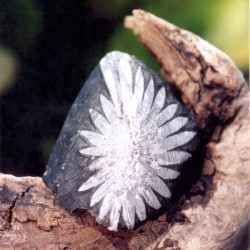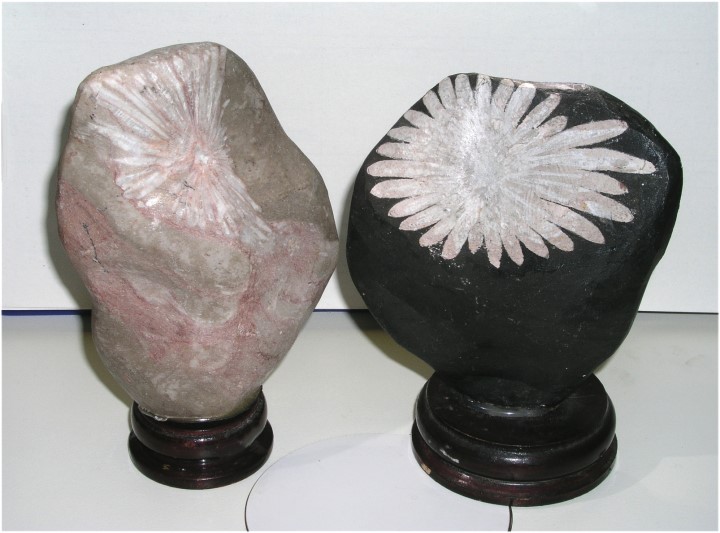
»Chrysanthemum Stones« to compare: naturally colored [left] and artificially dyed [right]
The term "flower stone" describes all rocks that show petal-like structures when polished. Rocks with radially grown andalusite crystals, vulcanites with radial arranged feldspars and limestones with bundles of celestine, they all have been associated with flowers. In Japan these stones are called "kikuka seki" or "kikka seki", loosely translated: "Chrysanthemum Stone" (kiku = chrysanthemum, seki = stone). There is no scientific definition of what is meant by "chrysanthemum stone". Therefore, we are presenting the two most common varieties here.
Celestine limestone (»Chrysanthemum Stone«)
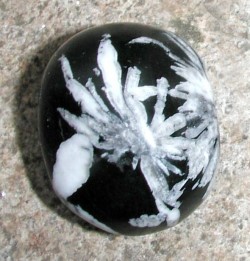
Fig. 1: »Chrysanthemum Stone« consisting of white celestine with calcite in dark gray limestone (Occurrence: Jianxi, China)
Photo: K. Sieber, www.makrogalerie.de
Since the 1990s, a black limestone rich in bitumen from the Chinese province of Hunan is being offered under the name »Chrysanthemum Stone«. The enclosured white, radially arranged, petal-shaped intergrowth of celestine with calcite in a dark, almost black limestone matrix attracted the attention of many collectors. A steadily growing demand was opposed to a steadily decreasing availability of beautifully formed flower shapes. This is why the white crystals were emphasized with articial color more and more.
Imitations
The contours of the often irregularly shaped celestine columns are evenly bordered and retouched to beautiful looking tips. Interestingly, not the white, petal-like structures are painted on the black parent rock, but the surrounding limestone is colored black.
The shrinking resources also lead to a growing number of imitations where light gray limestone without any celestine is being colored black. The petal-shaped structures are left out in the process so that the appearance of a »Chrysanthemum Stone« is achieved.
Raman analyses carried out by the EPI laboratory in 2013 on various »Chrysanthemum Stones« from China showed that celestine can only be detected in the uncolored specimens. The dyed specimens, on the other hand, were always dyed limestone without any signs of celestine.
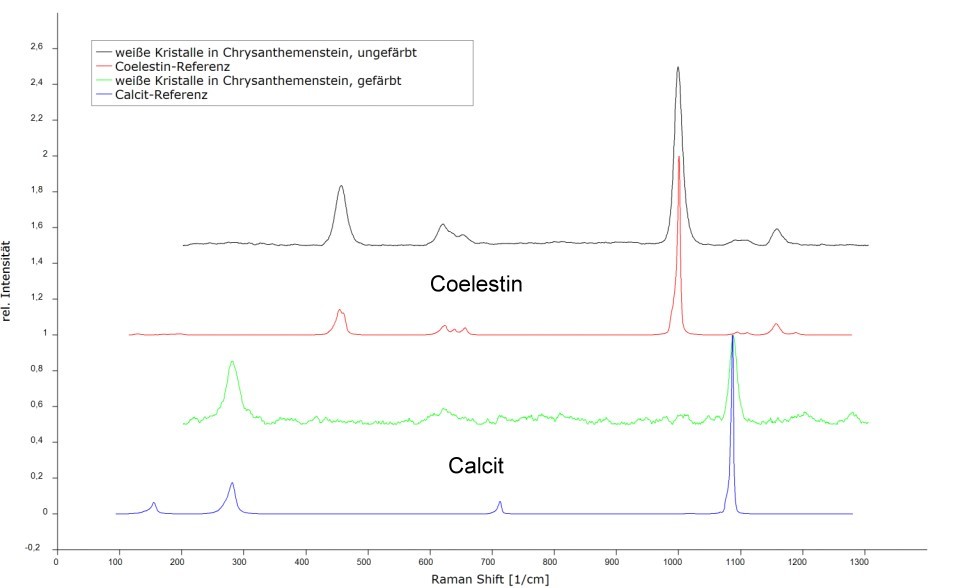
Fig. 3: Raman analyses of colored and uncolored »Chrysanthemum Stones« showed that only the uncolored specimens contained celestine.
Andesite porphyry (»Flower porphyry«)
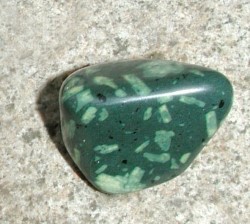
Fig. 4: »Flower porphyry« consisting of whitish feldspar in a dark andesite matrix (Occurrence: Greece)
Photo: K. Sieber, www.makrogalerie.de
Before the emergence of Chinese »Chrysanthemum Stones« on the European market, various volcanites (usually rhyolites) with a porphyritic structure (large individual crystals surrounded by a finely grained ground mass) were already known under this name. In the older petrographic literature such rocks are called "porphyry". As this term only addresses the individual structure but not the type of rock, it is obsolete by now and has been replaced by the rock name with the addition "porphyry" (e.g. andesite porphyry).
One of the most well-known porphyries in Europe comes from Greece and is known in the stonemasonry industry as "Porfido Verde Antico". This was an important decorative stone already in the ancient world, used to make columns, facades and baptismal fonts.
According to modern rock nomenclature rules, this type of rock is called andesite. The andesite porphyry shown in Fig. 4 shows large, white feldspars (usually oligoclase) that are occasionally greenish in color due to a certain content of epidote and/or chlorite. Sometimes they overlap each other so that they look like flowers. They are surrounded by a very finely grained, dark ground mass made up of feldspars (andesine | oligoclase), pyroxenes (enstatite), amphiboles (hornblende) and mica (biotite).
Recently also very beautiful porphyries come from Australia. In the mineral trade the name »Flower porphyry« has been established for these rocks. This trade name expresses both: the flower-like features of the feldspars and the porphyritic structure.
To avoid confusion we recommend to use the term »Chrysanthemum Stones« only for the dark limestone with celestine inclusions from China. Porphyry, on the other hand, could be called »Flower porphyry«.
Literature:
FANG, YE-SEN, YUAN, XU-YIN (1991): Discovery of the Chrysanthemum shaped Celestite in the Permian Carbonates of Pingxiang-Leping Depression of Jianxi Province, Chin. Science Bull., 36, 14.




